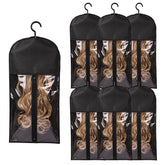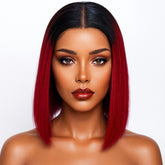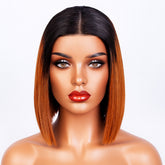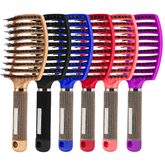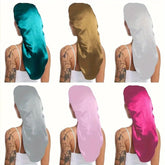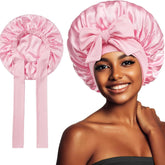The 'Big' Hair Trend Explained: TikTok, Identity and Care

One recent TikTok-driven conversation has given many people a name for a familiar experience: that glorious, sometimes ungovernable mass of hair many call “big” hair. What began as short clips and relatable commentary has grown into a trend that blends texture classification, identity and practical haircare. This piece looks at why the label has struck a chord, what hair types it often describes, and simple, realistic ways to live with — and love — voluminous hair.
What the trend actually is
On social platforms, creators are naming and normalising distinctive hair traits that previously lacked a single descriptor. “Big” hair, in this context, isn’t just about length. It’s volume, density and shape: hair that creates a silhouette, resists sleek styling and reacts strongly to humidity and products. Much of the content shows everyday moments — from the rituals of detangling to celebratory styling — which explains its resonance.
Importantly, the trend is less about scientific taxonomy and more about cultural shorthand. For many people it’s a joyful reclamation: naming something can turn frustration into community. For others, it’s an invitation to rethink how we categorise texture beyond the usual curl-type charts.
Why naming matters for hair identity
Labels can be powerful. When creators name a hair experience, they provide a language that helps people understand their hair and find community. That matters for several reasons:
- Validation: Recognising a shared trait reduces isolation and builds solidarity among people with similar hair experiences.
- Representation: Seeing “big” hair celebrated on screen challenges narrow beauty standards that favour sleekness or uniformity.
- Practical exchange: Labels make it easier to swap tips, products and techniques that actually work for a given hair behaviour.
At the same time, industry professionals caution against rigid categories. Hair is highly individual — influenced by density, porosity, genetics and styling history — and a single label should act as a starting point for care, not a definitive diagnosis.
Practical care tips for 'big' hair
Whether you embrace the label or prefer your own terms, managing voluminous hair is largely about balance: moisture without heaviness, definition without crunch, and detangling with respect for the hair’s natural structure. Here are approachable routines and techniques stylists recommend.
- Use weight-friendly moisture: Choose conditioners and masks that hydrate but don’t overly weigh hair down. Look for ingredients like glycerin or lightweight oils (jojoba, squalane) rather than heavy butters if you want volume retained.
- Rethink shampoo frequency: Washing too often can strip natural oils and encourage frizz; too infrequently can create product build-up. Experiment with twice-weekly or co-wash alternatives until you find the sweet spot.
- Detangle gently: Work in sections with a wide-tooth comb or a detangling brush on damp hair, starting at the ends and moving up to the roots. Use a leave-in detangler to reduce breakage.
- Diffuse or air-dry strategically: If using heat, a diffuser on low-medium settings preserves shape and reduces frizz. For air-drying, consider a loose plopping method with a microfibre towel or cotton T-shirt to encourage definition without flattening.
- Layer your products: Start with a lightweight leave-in, add a shaping cream or mousse to define without stiffness, and finish with a humidity-resistant serum sparingly at the ends.
- Embrace shape-focused cuts: Speak to a stylist about layering that keeps body without unnecessary weight. Proper shaping can reduce daily styling time and enhance natural movement.
Small shifts in technique often deliver the biggest difference. For example, applying conditioner mainly to mid-lengths and ends instead of the scalp can preserve lift at the roots while keeping hair nourished.
Takeaway
What started as TikTok shorthand is a broader conversation about identity, representation and practical haircare. Naming “big” hair helps people find community and swap solutions, but hair remains highly individual. The most useful approach is to combine gentle, texture-aware practices with professional guidance to highlight natural volume without sacrificing health.
Explore More: Discover related reads from Hairporium — News • Guides • DIYs • Expert Articles.
Stay Updated: Read more UK hair industry news and innovations on Hairporium News.

